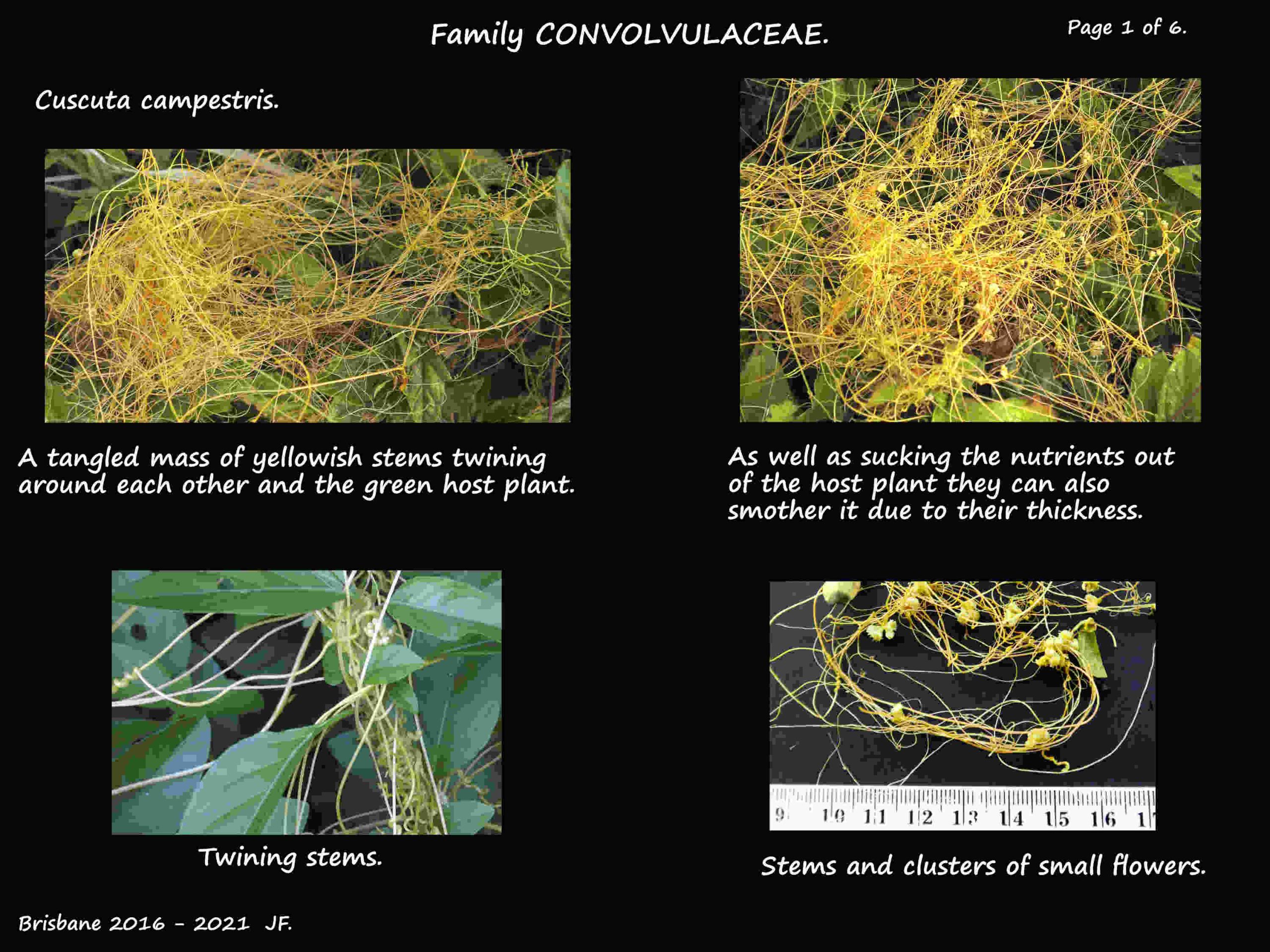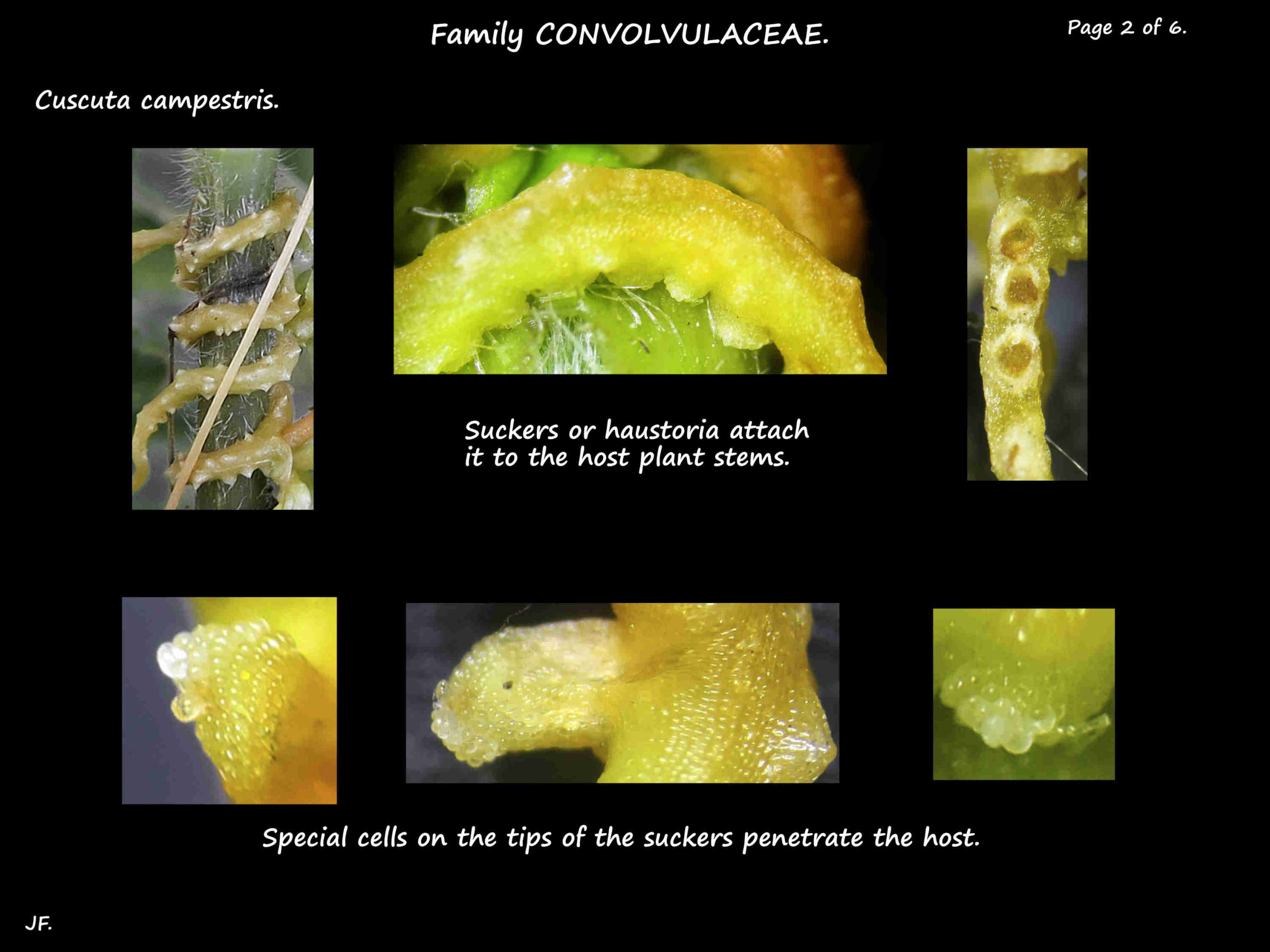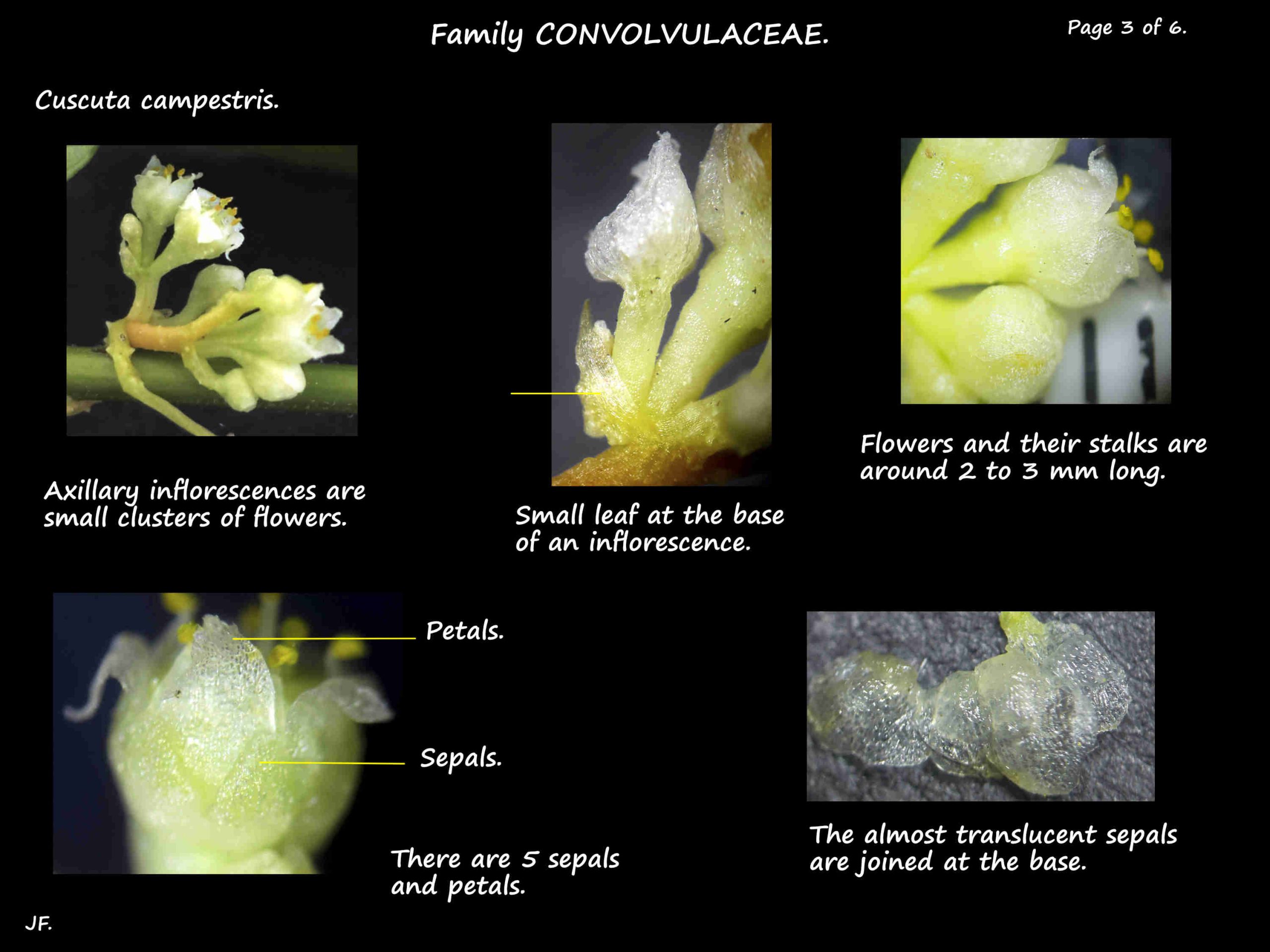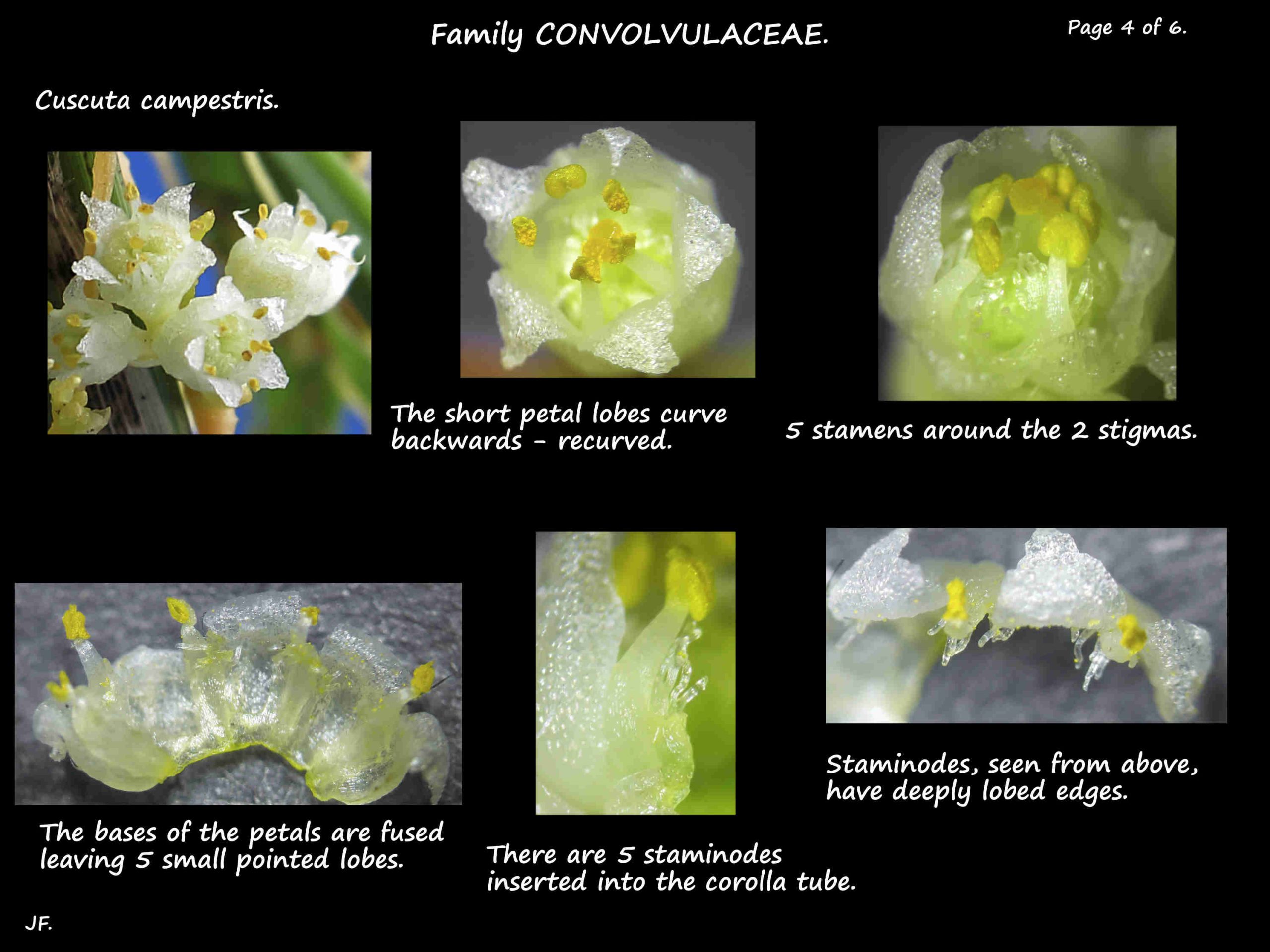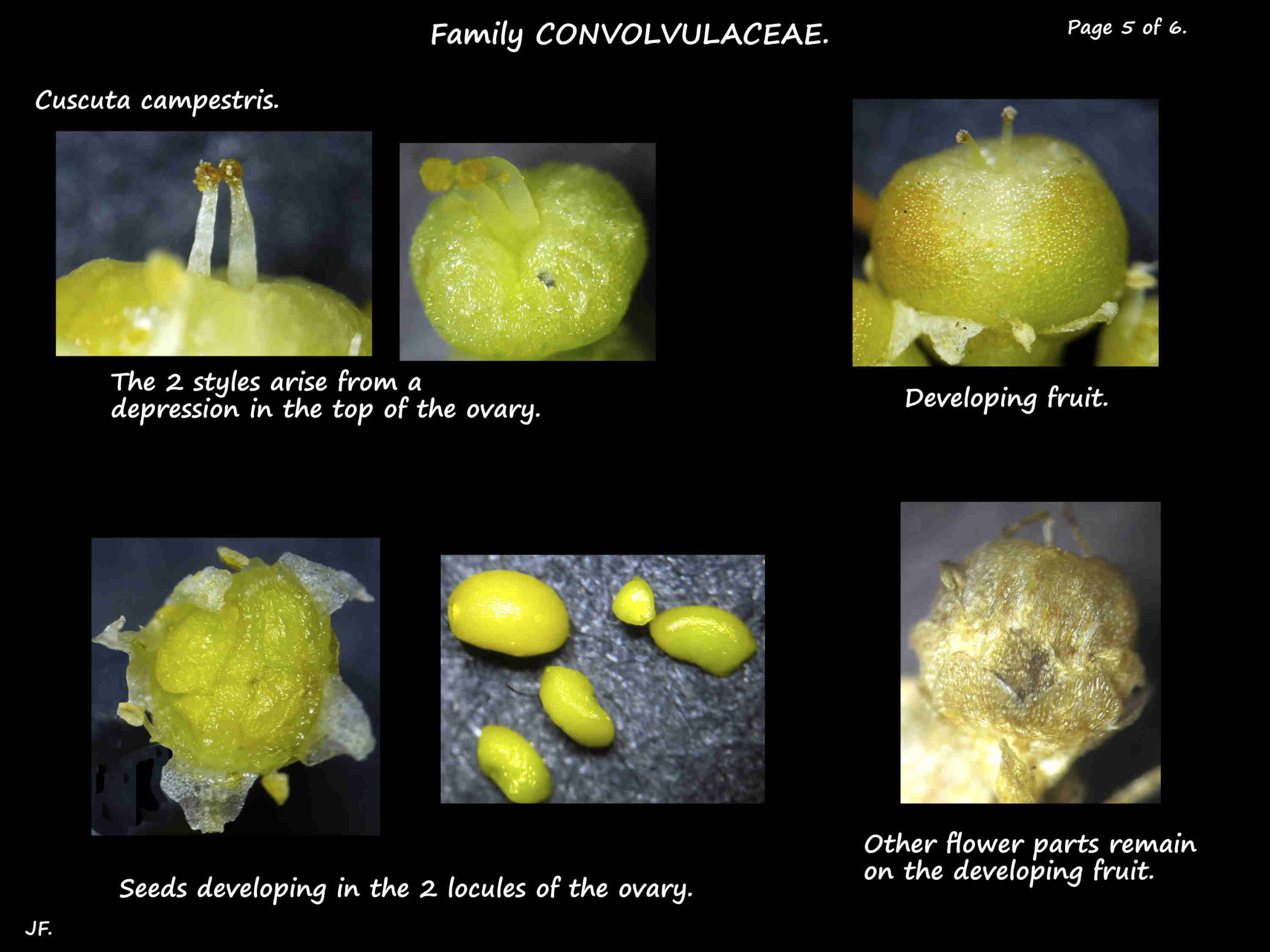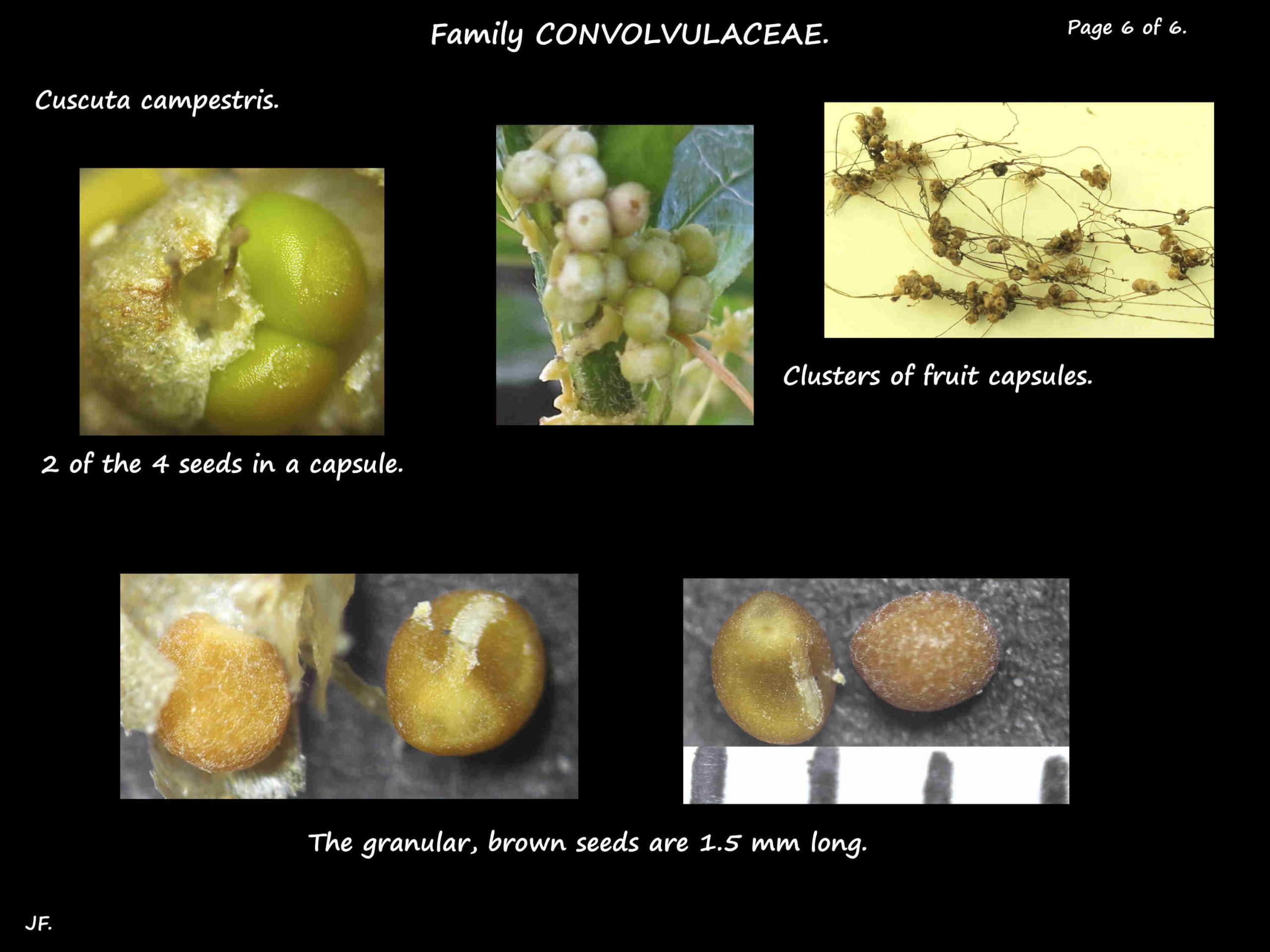Cuscuta.
Family Convolvulaceae.
About 100–170 species commonly known as Dodder or Strangleweed.
There are 14 species in Australia and 3 are natives.
Various species are found in all states and it is a noxious weed in some.
They are climbing, parasitic herbs that can damage host plants by absorbing their nutrients
or growing over and smothering them.
Annual or perennial depending on what the host plant is.
The thin twining and branching stems are yellow, pink, green or orange.
They can grow quickly and spread for many metres.
Roots are temporary and disappear after the stems are attached to the host.
Small suckers (haustoria) on the stems penetrate the host and absorb its nutrients and water.
If leaves are present they are very small and scale-like.
They are alternately arranged in a spiral.
Some have a small amount of chlorophyll but most have none.
Axillary inflorescences are a single flowers or small clusters along the stem.
Flowers are bell-shaped or tubular.
They may or may not have stalks and bracts are present.
The petals are white, pink or cream.
The calyx has (3) 5 sepals that are free or with the bases joined.
The corolla has (3) 5 petals in 1 whorl usually with the bases joined.
There are mostly 5 stamens that are attached to the base of the corolla tube.
Anthers open via longitudinal slits.
There may also be 5 infertile staminodes in a second whorl.
Staminodes, sometimes referred to as scales, are oblong and shorter than the petals.
The edges may be lobed or slightly or deeply dissected giving a fringed appearance.
The superior ovary has 2 or 3 carpels and 2 or 3 locules each with 2 ovules.
There are 2 styles either separate or partially joined and 2 stigmas.
Fruit are capsules that split around the middle to release the 4 seeds.
When seeds germinate they have to attach to a green host plant to survive.
They are parasitic on a wide range of plants that vary with the Cuscata species.
Following are brief descriptions of 2 species.
Cuscuta campestris.
Golden Dodder is naturalised in S.E. Queensland where it is a minor environmental weed.
Thin, twining stems are orange-yellow or a paler yellow or greenish.
Suckers attach the stems to host plants.
Described as leafless or with minute scale-like leaves.
The tubular, white or cream flowers are about 3 mm long.
The 5 sepals are joined at the base as are the 5 petals.
The petals have pointed tips that are bent outwards.
There are 5 stamens and 2 carpels.
Fruit are capsules with up to 4 yellow-brown seeds with a rough surface.
Cassytha species are similar in appearance with thin, twining apparently leafless stems
but their flowers have 3 petals and the stems are more green.
Cuscuta australis.
Australian Dodder is a native with pale brown or yellow stems.
Axillary inflorescences are clusters of flowers with pointed bracts at the base.
Flowers have no, or a minute stalk and 5 sepals and 5 petals.
The white petals are fused at the base.
There are 5 staminodes or scales with a deeply lobed margin.
They are shorter than the corolla tube.
Roundish capsules are up to 4 mm across.
J.F.
